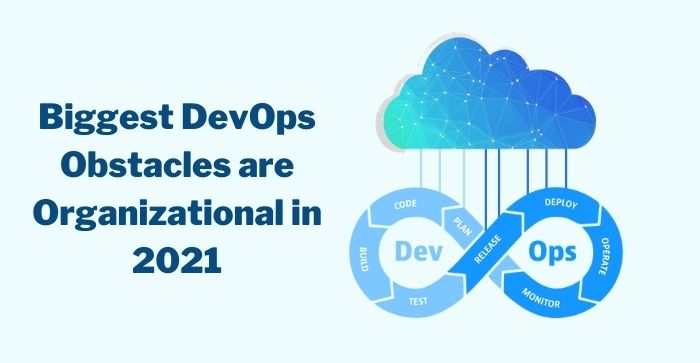
Many software and IT Operations companies have incorporated DevOps concepts into their work cultures in order to become faster and more innovative versions of themselves.
DevOps has exploded in popularity throughout enterprises in a very short period of time, as evidenced by its adoption by companies such as Google, Amazon, Netflix, Walmart, and others. The focus of DevOps has evolved away from product delivery as it enters its second decade. It’s no longer just about development and operations; it’s about breaking down barriers between businesses and their customers, with a focus on delivering value rather than just new features and products.
‘DevSecOps’ was extended to include information security and compliance in the development process.
Now, rather than being impeded by technical bottlenecks or cultural divisions, DevOps is hampered by how to get corporate leadership on board.
1. Overcoming the “Dev vs Ops” mentality
Many companies still believe in the old cliché of developers hurling code over an imaginary wall to a focused operations team, with developers seeking to innovate and make changes as soon as possible while the operations team tries to keep service levels high.
The aims of these two groups frequently conflict, producing friction and resulting in handovers, increased expenses, and lengthier feedback loops.
DevOps is all about bringing teams together and dismantling silos inside IT departments. This journey begins with establishing a vision for how this will function for your company.
Also Read: 3 DevOps skills IT leaders need for the next normal
2. Streamlining Your Deployment Process
How much of your development, testing, and deployment can you automate? The cornerstone of DevOps is a continuous integration and continuous delivery (CI/CD), which reduces the time and cost of transferring a feature from development to production. The more worth you can get out of DevOps, the faster you can release new features. However, one of the most significant issues we find is enforcing corporate policies and development standards without stopping development or relying on personnel to remember to do so.
Automated deployment cycles give less time for evaluations, raising the danger of lapses such as the disclosure of secret keys and credentials or infrastructure misconfiguration. Learn more about Policy Enforcement that is Automated.
3. Too much emphasis on tools
With the allure of DevOps adoption, bright new solutions on the market might appear to address every problem imaginable.
On the other hand, new tools require training your team on how to use them, as well as ensuring that they meet security requirements and are integrated with existing infrastructure.
All of this may cause you to lose sight of your primary concern: your team.
DevOps relies heavily on your team and organizational structure. The team’s processes will follow after you have the proper framework in place. After you’ve outlined the processes, you can figure out what tools you’ll need to complete them.
The people of your team are the most crucial aspect of DevOps. There may be misunderstandings if they are not taught on the newly established processes and technologies, which would slow down the adoption of DevOps methods.
4. Resistance to Change
Some team members and important stakeholders may be apprehensive about moving to DevOps. It might be more appealing to sell it as a continuation of current development procedures rather than a revolution.
Giving individuals advice on how to change can be perceived as a negative reflection on the person getting the advice. It is important to note that a DevOps transition does not happen overnight; it must be progressive and fluid. As people become more acquainted with the DevOps culture and realize the various ways they may contribute to the development process, they will be able to embrace it.
A better alternative is to choose a small product or a full-stack slice of an existing application to redesign into DevOps practices.
Once teams witness the benefits in action, they will naturally want to adopt the new ways of working as well. This will gradually reduce the sensation of unfamiliarity, allowing everyone to join the DevOps revolution.
Also Read: 3 DevOps skills IT leaders need for the next normal
5. Getting started with the continuous learning process
Curiosity is a powerful drive for many people to begin studying! The will to continuously learn, adapt, and develop one’s skills and knowledge is by far one of the most crucial enablers for the team to begin adopting a DevOps mindset.
One approach to do this is to make sure that teams have access to a platform that allows them to learn and share. This can be done through practice, where the company invests in a monthly day of learning and knowledge exchange, lunch and learn programs or the adoption of guilds across teams.
Similarly, regardless of how large or small the organization is, a train-the-trainer strategy may be used to ensure that best practices are communicated throughout all teams. No matter whatever strategy you pick, cultivating a culture of continuous learning can be the first tiny step toward implementing DevOps practices.
BDCC
Latest posts by BDCC (see all)
- Four Steps to Balance Agility and Security in DevSecOps - April 22, 2025
- Enhancing Security Posture with Azure’s AI-Driven Threat Detection - April 15, 2025
- Why Golang is Becoming the Go-To Language for DevOps Engineers - April 11, 2025

